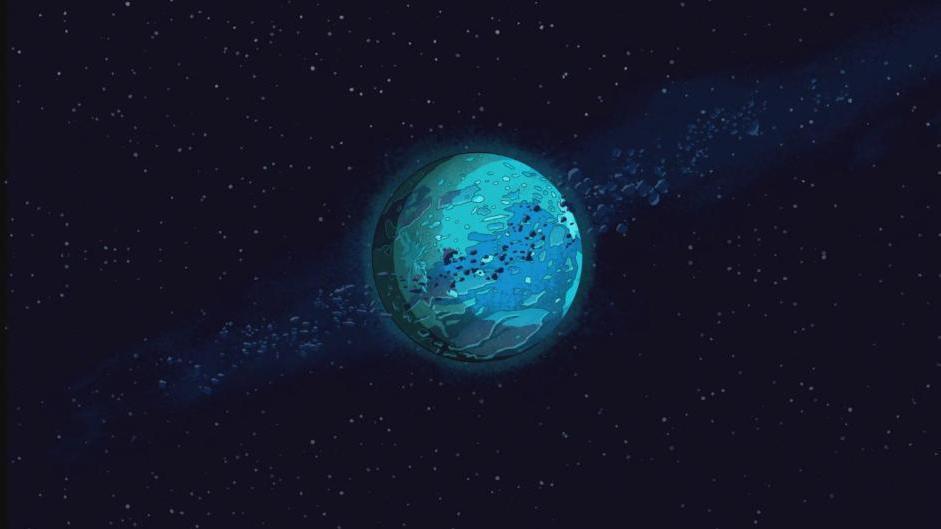Astronomers propose a new way to classify planets
- July 17, 2024
- 0
The criteria for determining the status of a “planet”, adopted in 2006, are not suitable for worlds outside the solar system. A team of scientists from the USA
The criteria for determining the status of a “planet”, adopted in 2006, are not suitable for worlds outside the solar system. A team of scientists from the USA

The criteria for determining the status of a “planet”, adopted in 2006, are not suitable for worlds outside the solar system. A team of scientists from the USA found a solution to this problem. They proposed a mathematical formula that allows you to quickly classify planets around other stars. The new method is also valid for our system: it keeps all eight planets in it, but Pluto remains “in the sea” as before.
In early 2005, a group of American astronomers were searching for trans-Neptunian objects
discovered the celestial body, which would later be named Eris. Immediately after the discovery, heated debates began in the world of scientists about whether Eris should be considered the tenth planet. According to initial estimates, the ninth planet of the Solar System was larger than Pluto (only in 2011 scientists proved that Eris was slightly smaller than it).
The discussions lasted almost a year, culminating in a conference held by the International Astronomical Union in Prague in 2006. Astronomers then concluded that there could be dozens of objects like Eris, and approved new criteria that a celestial body must meet to earn the status of “planet.” Eridia was ultimately not given this status, and Pluto was not.
According to the previous definition, an object:
At the 2006 conference, researchers added another point: the object must dominate its orbit, and there must be no other objects near it except its moons. Eris and Pluto met only the first three criteria, but not the last. At the same time, experts introduced the concept of dwarf planets, transferring the two celestial bodies to this category.
The adopted standards were limited only to the solar system and did not touch bodies outside its borders – exoplanets – which drew criticism from many scientists who insisted that the new criteria be revised.
A group of American astronomers led by Jean-Luc Margot (Jean-Luc Margot) from the University of California, Los Angeles, has proposed a much simpler way to determine a planet’s status based on mass. Scientists believe that any object orbiting a star or its remnant with a mass that exceeds the mass of Jupiter by 0.005 percent, or 13 times less, should be called a planet.
According to researchers, the lower limit is 10? kilograms, the golden mean between the mass of dwarf planets and the planets in the solar system. The upper limit is 2.5×10²⁸ kilograms, a value between a planet and a star, the limit at which nuclear fusion begins and deuterium is burned. In 2022, an exoplanet with possible nuclear fusion was discovered by an international team of scientists.
Not only do all known exoplanets, of which there are about 5,700 as of July 2024, but also the planets in our own system meet the criteria proposed by Margot’s team. This method “includes” all eight objects, but excludes Pluto.
As the International Astronomical Union acknowledged in 2006, one of the main problems in determining planetary status is that astronomers cannot be sure whether there are other relatively large objects orbiting a potential planet. In other words, it is difficult for scientists to observe whether space is clear of massive objects.
To find out if a hypothetical planet could dominate its orbit, Margot and her colleagues used a mathematical formula that relates the mass of the planet to its distance from its star. This formula helps to find out if smaller objects like Pluto, Eris and Ceres are located on the outskirts of the planet. Importantly, this method only requires mathematical calculations and does not require astronomical observations.
It is interesting that the Margo team’s method involves studying hydrostatic balance, that is, measuring the degree of sphericity of the planet, how close its shape is to roundness, but this is the most important requirement of the International Journal of Astronomy. Union.
“It is quite difficult to measure the sphericity of exoplanets and small bodies in the solar system. The objects that dominate their orbits will generally always be round and have masses greater than the minimum value of 10 ²³ kilograms,” Margo explained.
The results of the study by American astronomers are published on the website of the electronic preprint archive arXivIn August 2024, a team of scientists will present them at the International Astronomy Conference in Cape Town (South Africa). Margo hopes that at the next conference in 2027, the way of determining the status of a “planet” proposed by his team will be chosen as the main method by the International Astronomical Union.
Source: Port Altele
As an experienced journalist and author, Mary has been reporting on the latest news and trends for over 5 years. With a passion for uncovering the stories behind the headlines, Mary has earned a reputation as a trusted voice in the world of journalism. Her writing style is insightful, engaging and thought-provoking, as she takes a deep dive into the most pressing issues of our time.